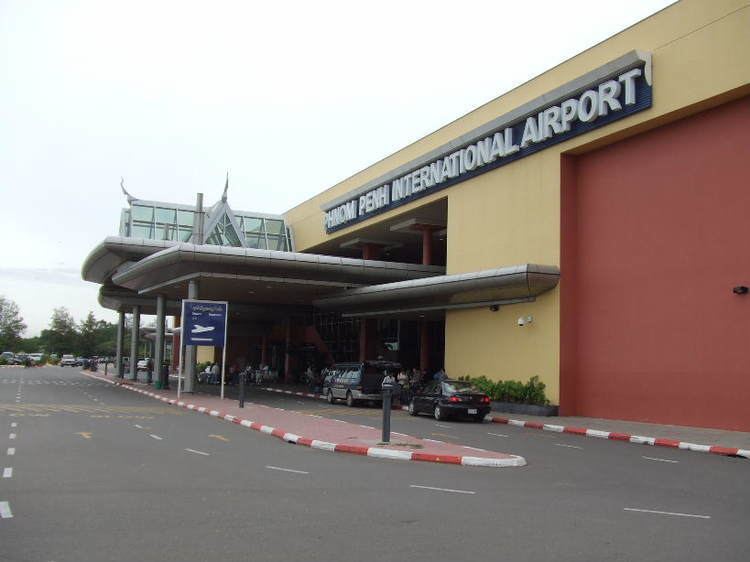Airport type Public / Military 05/23 3,000 Elevation 12 m Yearly aircraft movements 33,435 | Elevation AMSL 40 ft / 12 m Code PNH Phone +855 23 862 800 | |
 | ||
Website www.cambodia-airports.com/index.php Address 12000,, Angkor Phnom Penh St, Phnom Penh, Cambodia | ||
Phnom Penh International Airport (IATA: PNH, ICAO: VDPP) (Khmer: អាកាសយានដ្ឋានអន្តរជាតិភ្នំពេញ French: Aéroport International de Phnom Penh), is the largest airport in Cambodia containing land area of 400 hectares. It is located 10 kilometres (5.4 NM) west of Phnom Penh, the nation's capital.
Contents
- Phnom penh international airport phnom penh cambodia 1th december 2015
- History
- Facilities
- Airfield
- Future development
- Passenger
- International terminal profile
- Domestic terminal profile
- Accidents and incidents
- References
Phnom penh international airport phnom penh cambodia 1th december 2015
History
Phnom Penh airport's former name was Pochentong International Airport (Khmer: អាកាសយានដ្ឋានអន្តរជាតិពោធិ៍ចិនតុង).
On 6 July 1995, the Royal Government of Cambodia (RGC) signed a concession agreement with the French–Malaysian joint venture company Société Concessionaire d'Aéroport (SCA), to operate Phnom Penh (PNH) – Pochentong International Airport. In return for a 20-year concession, SCA—70 percent owned by Groupe GTM and 30 percent by Muhibbah Masterron of Malaysia—committed to a $100 million improvement program that includes the construction of a new runway, terminal and cargo buildings, hangars, installation of a Cat III level Instrument Landing System (ILS) and associated approach lighting.
The Berger Group was selected by the RGC to provide independent engineering services during the concession, to audit the design and to advise on the practicality and cost of the concession's proposed improvements. The Berger team also supervised the initial works to accommodate widebody aircraft such as 747s, including asphalt concrete runway overlays; installation of new ILS, metrological equipment, runway lighting and generator and power systems; and construction of a new fire station, taxiway and turn-pad extensions.
Following the successful completion of the initial works, the Berger team provided design review and independent engineering services for the construction of a new 20,000-square-metre (220,000 sq ft) terminal building to accommodate growing tourist traffic. The $20 million terminal building includes five mobile aerobridges, over 1000 auto parking spaces and VIP and CIP facilities.
The airport also has a Dairy Queen inside. It is one of the first international franchises that have opened up in Cambodia. Also, the first Starbucks Coffee, in Cambodia, has also just been opened in the new terminal.
Facilities
The airport is at an elevation of 40 feet (12 m) above mean sea level. It has one runway designated 05/23 with an asphalt surface measuring 3,000 by 50 metres (9,840 ft × 160 ft).
The airport has two terminal buildings – one for international and one for domestic operations. Recently, it added a new facility for VIP service. The international terminal has 5 airbridges built in 2003. The airport's design capacity is 2 million persons per year.
Airfield
Future development
Cambodia Airports group plan to extend the Phnom Penh international airport passenger terminal building and increase the capacity of passenger visits and transit through this destination up to 3 million per year in the future. The construction started in 2013 and is expected to finish by 2017.
Passenger
25 airlines are served by Phnom Penh International Airport with 20 destinations.
International terminal profile
Domestic terminal profile
Departure side
Arrival side (open space concept)
